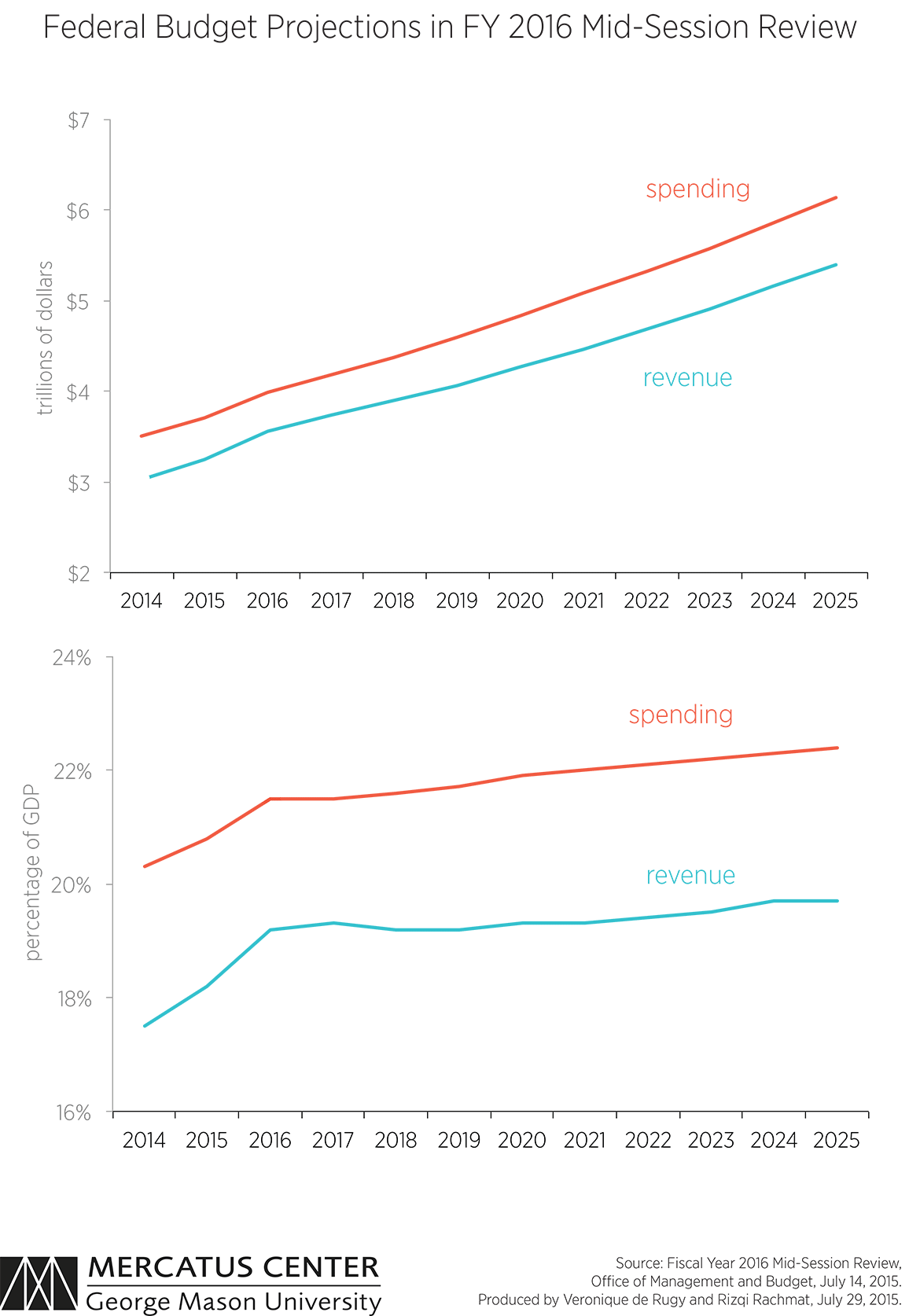- | Government Spending Government Spending
- | Data Visualizations Data Visualizations
- |
Mid-Session Budget Review: More Revenue, More Spending
The following chart shows projected revenues and spending under the president’s proposal according to the new figures provided by the MSR. The first graph displays the data in dollar amounts while the second shows revenues and spending as a share of the economy (GDP).
The Office of Management and Budget recently released the Obama administration’s fiscal year (FY) 2016 mid-session budget review (MSR). The MSR is an annual update of the president’s initial budget proposal that incorporates subsequent changes in policy and the underlying economic assumptions used in forecasting the budget’s future path. I reviewed the president’s budget proposal when it was released in February and the updated figures show that the story remains the same: the White House envisions more tax revenues and higher levels of spending.
The following chart shows projected revenues and spending under the president’s proposal according to the new figures provided by the MSR. The first graph displays the data in dollar amounts while the second shows revenues and spending as a share of the economy (GDP).
The top graph shows that revenues would climb from $3.6 trillion in FY 2016 to $5.4 trillion in FY 2025. Spending would jump from $4 trillion in FY 2016 to $6.1 trillion in FY 2025. Over that 10-year span, the federal government would take in $44 trillion in revenue and spend a combined $50 trillion. The resulting annual deficits would add $6 trillion to the federal debt held by the public, contributing to a total debt of over $20 trillion in FY 2025.
The bottom graph shows that revenues and spending as a percentage of GDP would also increase. After spiking from 17.5 percent in FY 2014 to 19.2 percent in FY 2016, revenues would remain at an elevated level and gradually reach 19.7 percent in FY 2025. Spending as a percentage of GDP would see similar growth after going from 20.3 percent in FY 2014 to 21.5 percent in FY 2016. In FY 2025, spending would reach 22.4 percent of GDP. Federal debt held by the public would stay relatively flat as a percentage of GDP, but at 75 percent that’s not cause for celebration. Indeed, the Congressional Budget Office’s most recent long-term budget forecast shows that this already dangerous level of debt will eventually reach destructive levels in the absence of substantial spending reforms.
By pursuing an agenda that essentially ignores the government’s long-term budget problems and instead encourages further expansion, the president is doing a disservice to the interests of future Americans, who would bear the brunt of the economic fallout under the current fiscal trajectory. While it is expected that the Republican-controlled Congress is unlikely to go along with the president’s tax-and-spend agenda, unfortunately, the GOP has yet to demonstrate that it’s truly serious about addressing the federal government’s bleak budget picture either.


